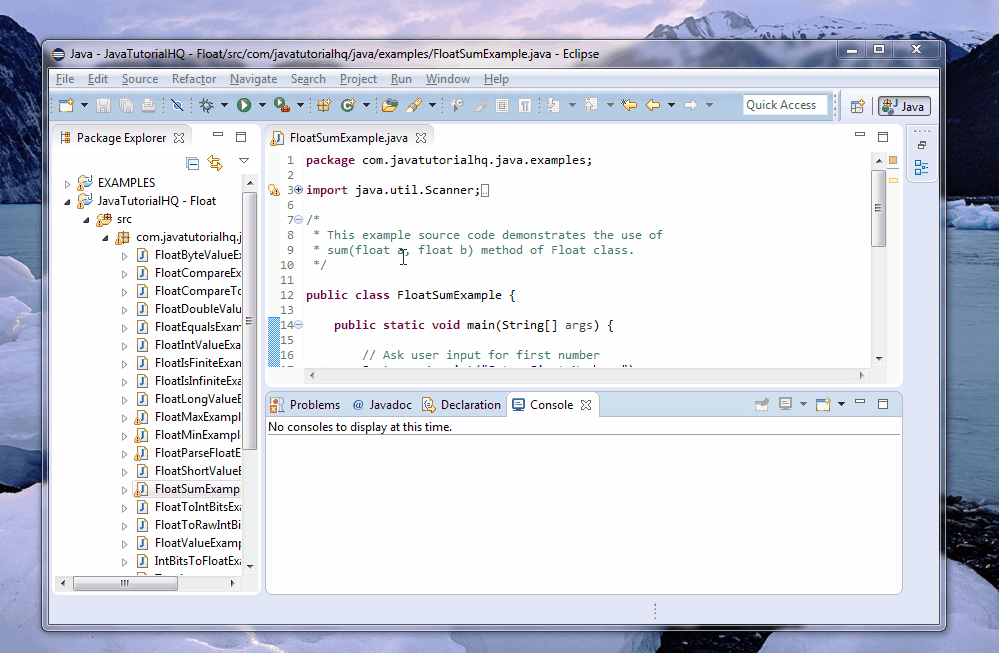java.lang.Float sum(float a, float b)
Description
Method Syntax
public static float sum(float a, float b)
Method Argument
| Data Type | Parameter | Description |
|---|---|---|
| float | a | the first operand |
| float | b | the second operand |
Method Returns
The sum(float a, float b) method of Float class returns float which corresponds to the sum of a and b.
Compatibility
Java 1.8
Java Float sum(float a, float b) Example
Below is a simple java example on the usage of sum(float a, float b) method of Float class.
package com.javatutorialhq.java.examples;
import java.util.Scanner;
import static java.lang.System.*;
/*
* This example source code demonstrates the use of
* sum(float a, float b) method of Float class.
*/
public class FloatSumExample {
public static void main(String[] args) {
// Ask user input for first number
System.out.print("Enter First Number:");
// declare the scanner object
Scanner scan = new Scanner(System.in);
// use scanner to get value from user console
Float f1 = scan.nextFloat();
// Ask user input for second number
System.out.print("Enter Second Number:");
Float f2 = scan.nextFloat();
// close the scanner object
scan.close();
// get the sum of the two float input
Float result = Float.sum(f1, f2);
System.out.println("The sum is: "+result);
}
}
Basically on the above example, we just ask for two float numbers from the console and we used the scanner class to get these values assigned as Float object. We then get the sum of the float input.

